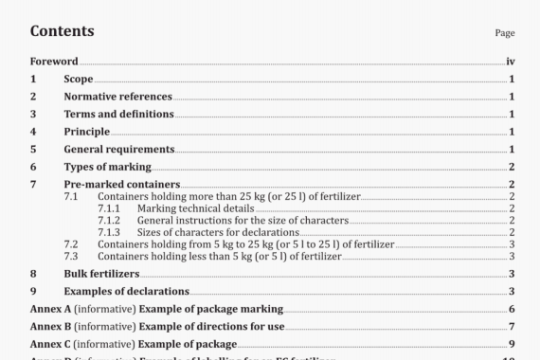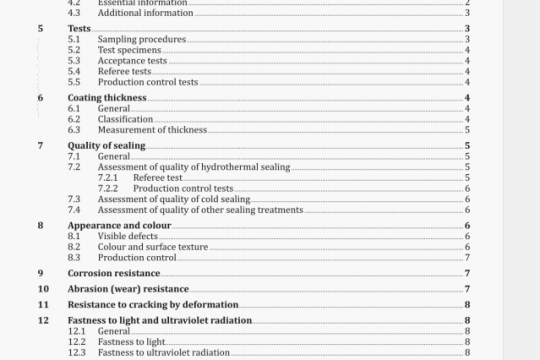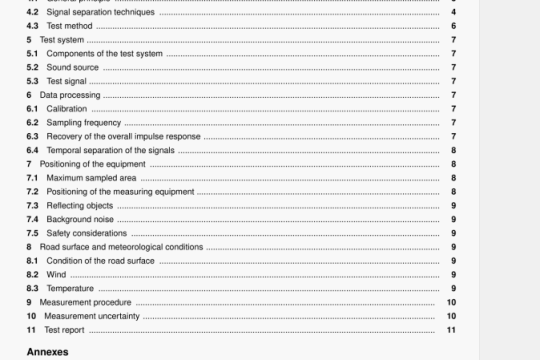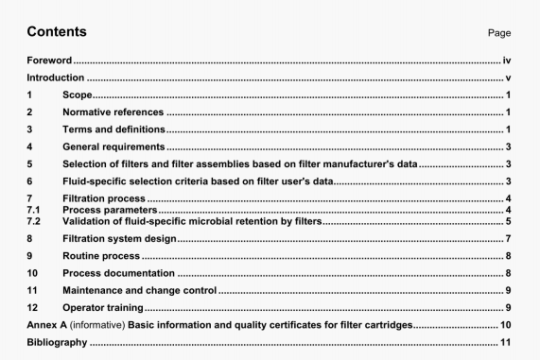ISO 611:2003 pdf download
ISO 611:2003 pdf download.Road vehicles — Braking of automotive vehicles and their trailers -Vocabulary.
braking system in which the energy necessary to produce the braking force is supplied by one or more energy-supplying device(s) (5.1) excluding the physical effort of the driver, for example, full-air braking system, full-power hydraulic braking system, air- over-hydraulic braking system (4.2.4).
NOTE A braking system in which the driver can generate braking force in a failed energy condition by muscular effort acting on the system is excluded from the definition.
4.1.4
inertia braking system
(trailer) braking system in which the energy necessary to produce the braking force arises from the thrust generated by a trailer approaching its towing vehicle
4.1.5
gravity braking system
(trailer) braking system in which the energy necessary to produce the braking force arises from the lowering of an element of a trailer mass under the influence of gravity
4.1.6
spring braking system
braking system in which the energy required for braking is supplied by one or more compressed springs acting as an energy storage accumulator
4.2 Braking systems relating to transmission means
4.2.1
mechanical braking system
braking system in which the control and energy are transmitted from the point of application to the brake(s) (5.5) by mechanical means such as levers, rods or cables
4.2.2
hydraulic braking system
braking system in which the control and energy are transmitted from the point of application to the brake(s) (5.5) by hydraulic transmission devices
4.2.3
pneumatic braking system
braking system in which the control and energy are transmitted from the point of application to the brake(s) (5.5) by pneumatic transmission devices
NOTE Two systems are possible: compressed air braking system and vacuum braking system.
4.2.4
air-over-hydraulic braking system
braking system having stored pneumatic energy, hydraulically actuated brakes and transmission means incorporating a pneumatic-to-hydraulic converter
4.2.5
electric braking system
braking system in which the actuating forces for the brake(s) (5.5) are primarily produced by electric motors, responding to electrical transmission signals
4.2.6
electronic braking system
EBS
braking system in which the control is generated and processed as an electrical signal in the control transmission, where an electrical output signal controls devices which produce the actuation forces
4.3 Braking systems relating to
arrangement of transmission means
4.3.1
single-circuit braking system
braking system having a transmission employing a single circuit so that in the event of a failure of this transmission, no energy for the production of the actuation force can be transmitted
4.3.2
dual-circuit braking system
braking system having a transmission employing two separate circuits so that in the event of a failure of one transmission circuit, the second circuit remains able to control and transmit the energy necessary to generate the actuation force to those brake(s) (5.5) connected to the system
braking system having a transmission employing several separate circuits so that in the event of a failure of one transmission circuit, the other circuits remain able to control and transmit the energy necessary to generate the actuation force to those brake(s) (5.5) connected to the system
4.4 Braking systems relating to vehicle combination
4.4.1
single-line braking system
braking system that uses a single connection line both for the energy supply to, and for controlling the braking system of, a towed vehicle
4.4.2
two-line braking system
multi-line braking system
braking system that uses two or more connection lines separately, but simultaneously, for the energy supply to, and for controlling the braking system of, a towed vehicle
4.4.3
continuous braking system
combination of braking systems for vehicles forming a vehicle combination characterized by the following:
the driver, from the driving seat, can graduate, by the single operation of a directly operated control device on the towing vehicle, an indirectly- operated control device on the towed vehicle;
the energy necessary to produce the braking force of each of the vehicles forming the combination is supplied by the same energy source (which may be the muscular effort of the driver);
simultaneous or suitably phased braking is applied to each of the vehicles forming the combination
4.4.4
semi-continuous braking system
combination of braking systems for vehicles forming a vehicle combination characterized by the following:
the driver, from the driving seat, can graduate, by the single operation of a directly operated control
5 Braking system components
A braking system consists of connected devices which supply energy, control and transmit that energy to the brakes and, if necessary, via supplementary devices on the towing vehicle, to the brakes of a towed vehicle.
5.1
energy-supplying device
part of a braking system which supplies, regulates and, if necessary, conditions the energy required for braking, and which terminates at the point where the transmission device starts, i.e. where the various circuits of the braking systems, including the circuits of accessories if fitted, are protected either from the energy-supplying device or from each other
NOTE This is also applicable to towed vehicles.
5.2
energy source
part of the energy-supplying device (5.1) which generates the energy
NOTE It can be located away from the vehicle (e.g. in the case of a compressed air braking system for a trailer) but can, in the simplest systems, be the muscular strength of the driver.




